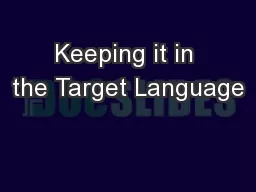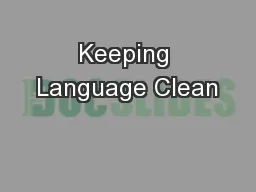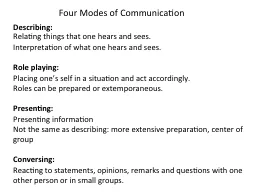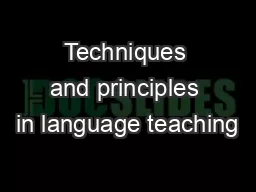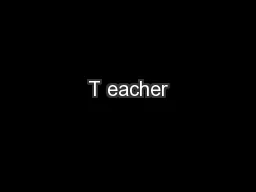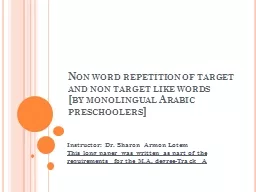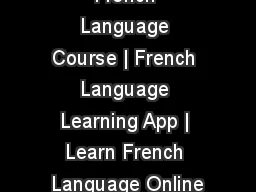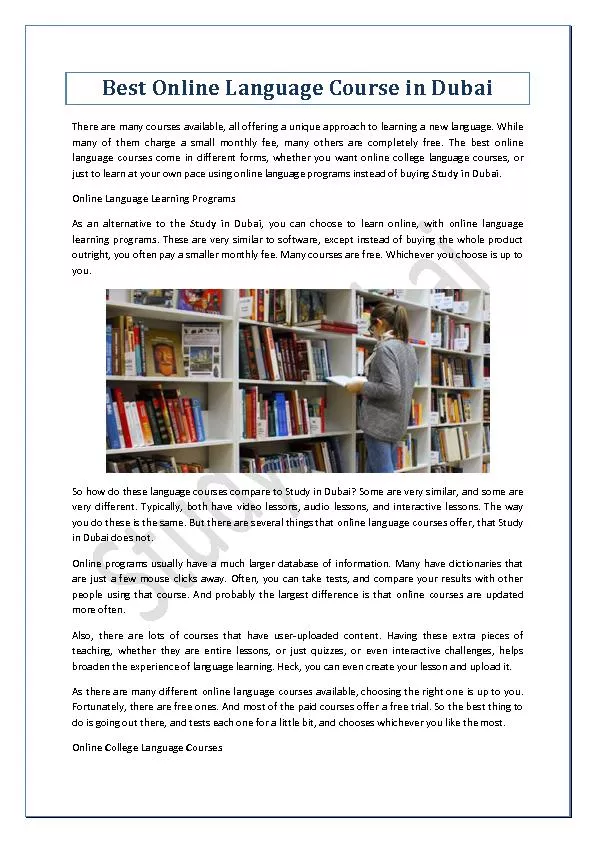PPT-Keeping it in the Target Language
Author : tatyana-admore | Published Date : 2018-01-30
Talia Block tblockdistrict30org taliablockweeblycom WescottSpanish Twitter tinyurlcomICTFL2015 Website Agenda Introductions and Overview Breaking it Down Activities
Presentation Embed Code
Download Presentation
Download Presentation The PPT/PDF document "Keeping it in the Target Language" is the property of its rightful owner. Permission is granted to download and print the materials on this website for personal, non-commercial use only, and to display it on your personal computer provided you do not modify the materials and that you retain all copyright notices contained in the materials. By downloading content from our website, you accept the terms of this agreement.
Keeping it in the Target Language: Transcript
Download Rules Of Document
"Keeping it in the Target Language"The content belongs to its owner. You may download and print it for personal use, without modification, and keep all copyright notices. By downloading, you agree to these terms.
Related Documents

